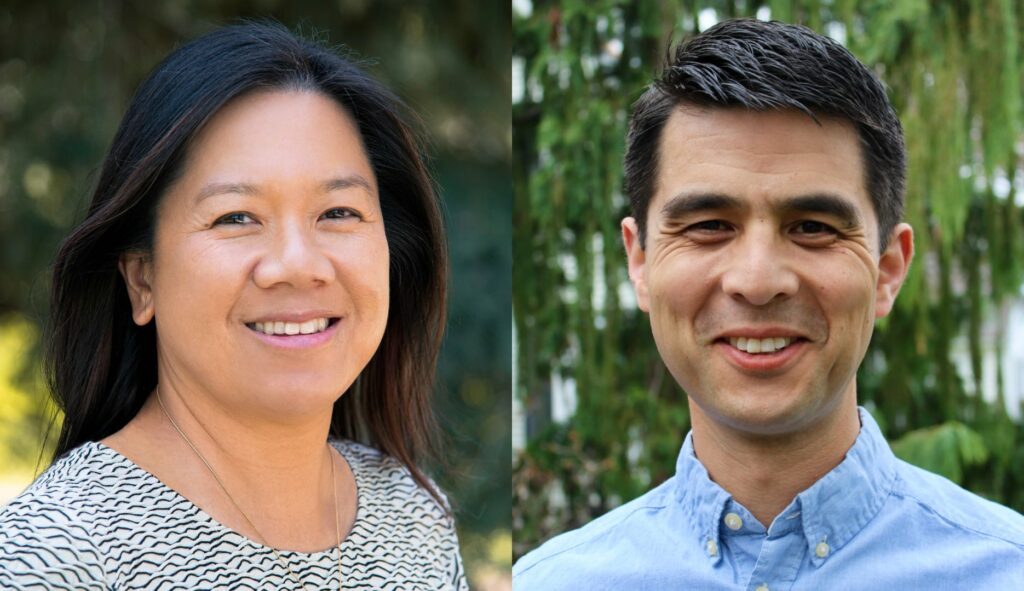
Andrea Wang and Jason Chin are both award-winning authors of children’s books whose powerful collaboration on Watercress catapulted them to new heights and expanded their audience tremendously. We are honored to include both Wang’s and Chin’s work in our literacy programs and libraries: Watercress is part of our Being a Writer 3e program; Redwoods by Jason Chin is part of the IDR Libraries Essential Collection; Your Place in the Universe, also by Jason Chin, and The Many Meanings of Meilan by Andrea Wang will be part of the Essential Collection in 2024.
It was my great pleasure to interview these two very special people as part of our preparation for the publication of Being a Writer, Third Edition in 2024.
Collaborative Classroom: First of all, congratulations on the many awards Watercress has received—a Newbery honor and Caldecott Medal among them—what an exciting time for you both! What have you learned through the process of collaborating together and how has the recognition for this book impacted your lives personally and/or professionally?
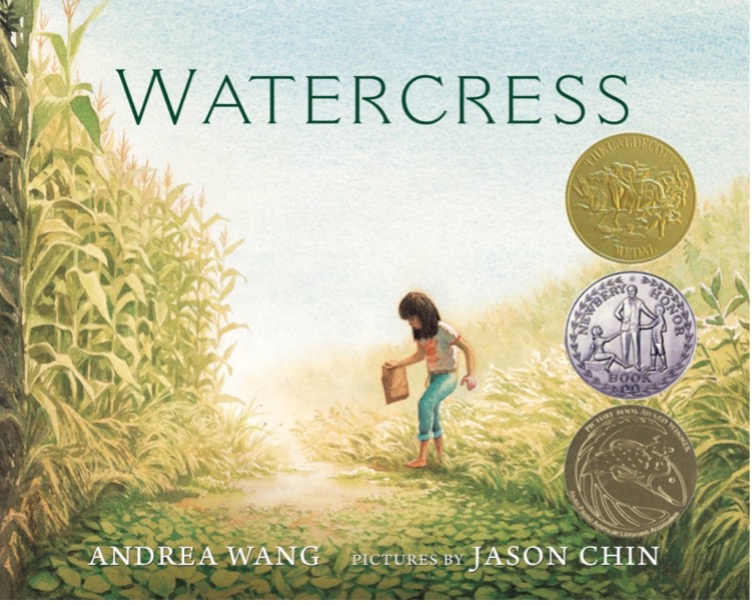
Andrea: Thank you! It has been an exciting and surreal time. Working with Jason has given me an even greater appreciation for artists and everything that goes into creating illustrations for picture books. After I wrote the text of Watercress, I had no idea how the story could be illustrated, since it was so interior and consisted largely of thoughts, memories, and complicated emotions. I was also afraid to put something so personal out into the world, so the recognition and reactions from readers have shown me that they appreciate that kind of emotional honesty. I’m now less afraid to be vulnerable and open with other people.
Jason: This book is very different from the books about scientific topics that I typically write and illustrate. Those are all about communicating information and a love of learning, but this book is about sharing a human experience. Sharing it with kids and seeing how they connect with Andrea’s story has been eye-opening. My experiences with readers have taught me a lot about the power and importance of sharing stories.
Collaborative Classroom: When you first published Watercress, what did you hope readers would take away from it and, now, after some time in the public eye, what responses to the work have surprised and/or gratified you?
Andrea: I hoped that the book would resonate with readers on a personal level, especially Asian Americans. And I hoped that readers would be inspired to share their own family stories with siblings, children, and other relatives. I thought that maybe seeing the impact my mother’s story has had on me could help other families talk about the events of their pasts, even if they were hard.
I wasn’t prepared for so many readers to find personal connections to the book. Not only do they have stories about foraging, but many relate to the themes of financial hardship and food insecurity. The book was released about a year after the Covid-19 pandemic began, and I think readers also gravitated to the feelings of grief and loss in the book. I’ve heard from a lot of people that the book made them cry! I like to think that it has been as cathartic for them to read as it was for me to write. The reactions from some of the youngest readers have really struck me, too. One teacher read the book to her second-grade class and a student said afterwards, “This is a life lesson book. Be happy with what you have; be proud of who you are.” That a young child had that kind of insight after reading the book has been one of the highlights for me.
Jason: I hoped that readers would learn about the lives of families who were different from theirs, especially immigrant families. And I was hopeful that the book would help readers who feel like outsiders see that they aren’t alone. But before the book was published, I didn’t fully understand how successful the book would be in this regard.
I have been surprised by how many readers from different backgrounds connect with the book. Many readers have told me about the wild food that they harvest with their families, including dandelion greens, raspberries, fiddleheads, and, yes, watercress. Other readers share how they’ve been teased by their older siblings, and many kids have wanted to tell me that they are immigrants. These interactions have been the most gratifying part of my experience with the book.
Collaborative Classroom: Watercress has a lot to do with building bridges—between generations, between cultures, between past events and the present, and even between parts of ourselves; in working together on it, you each crossed a bridge in a way, too:
Jason, you’ve said you were nervous about “illustrating someone else’s memories”1 (which is different from your usual focus on nonfiction), and Andrea, this was your first deeply personal text that reached into a painful part of your life.
Could you talk about other times when you’ve really gone out on a limb, reached across a divide? What did you do, what did you learn, and what was that experience like?
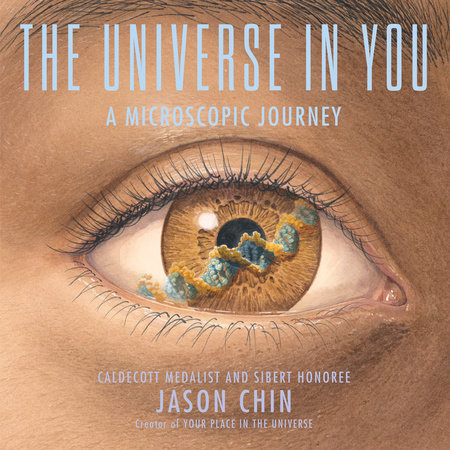
Jason: In my most recent book, The Universe in You, the protagonist uses a wheelchair. The idea came to me as I was thinking about the importance of representing diverse characters and I recognized that I had never centered a character who uses a wheelchair. It felt risky, because I am an outsider to that experience, but I decided to pursue the idea and reached out to a friend of a friend for help. Kelly has a spinal cord injury and she told me about her experience.
In our conversation, she described how students who use wheelchairs are regularly separated from their class throughout the day. They might, for example, have to exit through a side door, while their classmates go through the front door. The regular reminder of their difference can be very tough, she explained. So my book starts with the protagonist separated from her class after she’s gone down a ramp. But while she’s apart from them, she notices something really special, which kicks off the narrative.
Talking to Kelly required only a small effort on my part so I’m not sure I really went out on a limb, but I think that learning about her experience might count as crossing a divide. Putting the character in the book felt like more of a risk, but a risk worth taking if kids who use wheelchairs can see themselves represented in the book.
Andrea: When I was a sophomore in high school, I volunteered for a summer at a hospital in Boston. For several weeks, I worked on the oncology floor. At that time, although I was intent on eventually going to medical school, this was my first experience with terminally ill people and I felt very out of my element. I was afraid of saying the wrong thing and, as a very shy person, I had to force myself to start conversations with the patients.
There was one patient named Ephraim who was different from me in many ways: gender, age, race, and culture. I don’t recall who spoke first, but we chatted about the book on his nightstand. After that, I began to visit him regularly. I learned that despite our obvious differences, we had a lot in common—not just books, but movies and viewpoints about the world. I think it was one of the first times an adult who was not my parent or teacher took me seriously and treated me like a peer. I discovered a lot about empathy that summer, not just from Ephraim but from all the patients. Like everyone, they just wanted to be seen and heard.
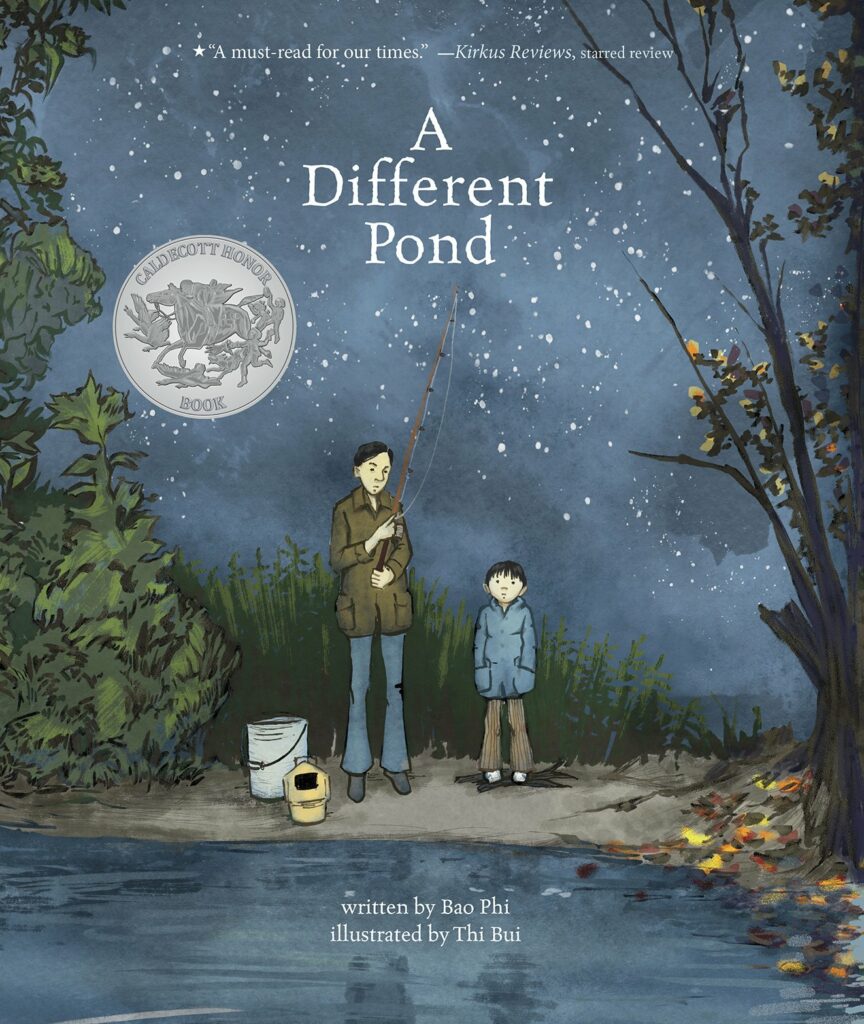
Collaborative Classroom: Andrea, you have talked about being inspired to write Watercress after reading A Different Pond by Bao Phi and Thi Bui, and you also said that as a child “writing was a way to continue the conversation with the characters in the books you were reading.”2 What books were they? What books did you love as a child and how have they influenced your work?
Andrea: I loved Andrew Lang’s Fairy Books of Many Colors series, as well as the Anne of Green Gables series by L.M. Montgomery and the Encyclopedia Brown mystery series by Donald J. Sobol. I remember trying to write my own fairytales and mysteries, as well as stories about Anne and Diana, although I don’t recall the specifics. I still like writing about imaginative and outspoken girls such as Anne, and giving them best friends like Diana. The fairytales that Lang edited were among the few children’s books I read growing up that featured characters from countries other than the United States. I developed an interest in different cultures around the world that persists to this day. That feeling of being seen while reading fairytales from China has inspired me to write stories for Chinese American readers so that they, too, can see themselves represented in books.
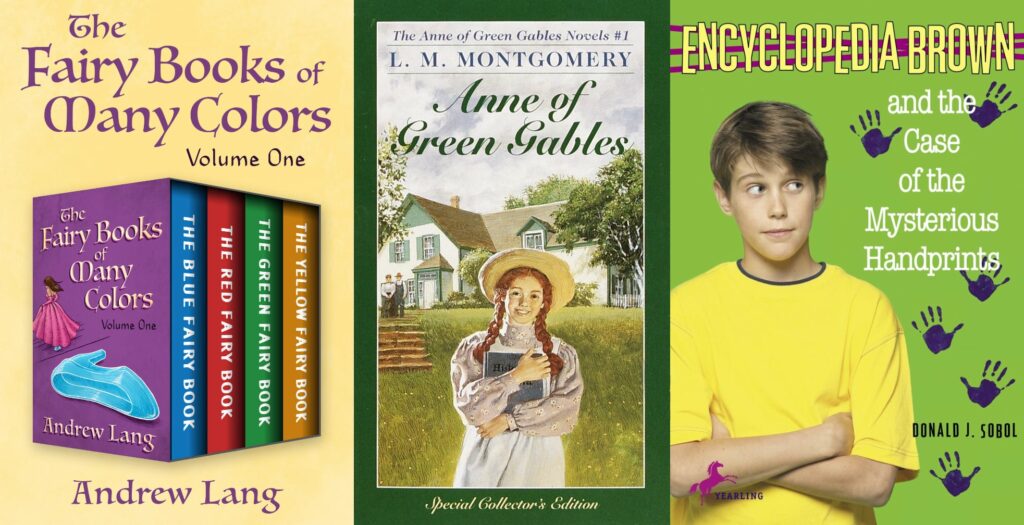
Collaborative Classroom: Jason, I understand that Trina Schart Hyman was a huge influence on your pursuit of art and bookmaking, but I am not sure if her books were a part of your childhood. One of them was an important part of mine—How Six Found Christmas – which I still read every year. What are the books from your childhood that resonated with you and how have they influenced your work?
Jason: I love How Six Found Christmas! Trina’s books were definitely part of my childhood and influenced my art, especially The Fortunetellers by Lloyd Alexander. The artwork from that book was hanging in our small town’s library for a year or so and I was captivated by it. The other artists that I would single out are David Macaulay and Ed Young. Other than Trina, Macaulay’s work has influenced me more than any other. I devoured Castle and The Way Things Work and they are still sources of inspiration for me. When I was young, my parents read me Ed Young’s books as a way to connect with my Chinese heritage. Chinese Mother Goose Rhymes, The Rooster’s Horns, and The Terrible Nung Gwama were on regular rotation at bedtime. When Lon Po Po won the Caldecott, it was a big deal to me, because I called my grandmother Po Po and I had this feeling of ownership over the book. I felt like Chinese stories mattered, and by extension, me and my family mattered. In a way his win was my win, too.
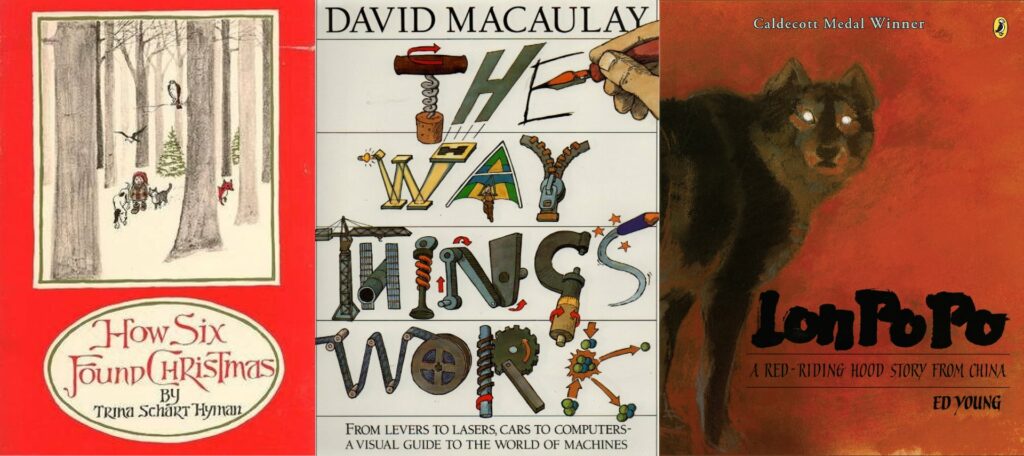
Collaborative Classroom: The act of foraging in Watercress ultimately links the young girl to her current home in Ohio and to her parent’s former home in China—food and stories nourish and change her. I think that we forage for stories too—search and sift our experiences and memories for nuggets to share. Andrea, you’ve talked about mining your memories and Jason, you describe following your curiosity as a way to discover new topics. I’d love to hear more about how you each come up with your book ideas—and how you know you’re onto something. What have you learned about yourself from those ideas?
Andrea: One of the main reasons I write is to process my experiences, so I often reflect on certain things that have happened and try to wring the emotional truth out of them. Every now and then, I’ll do freewriting exercises that help me mine those memories. I also keep multiple notebooks—some have snippets of dialogue that I’ve overheard or imagined, others have interesting facts that I’ve come across, and still others have quotes from books that I found compelling or list topics that I want to research.
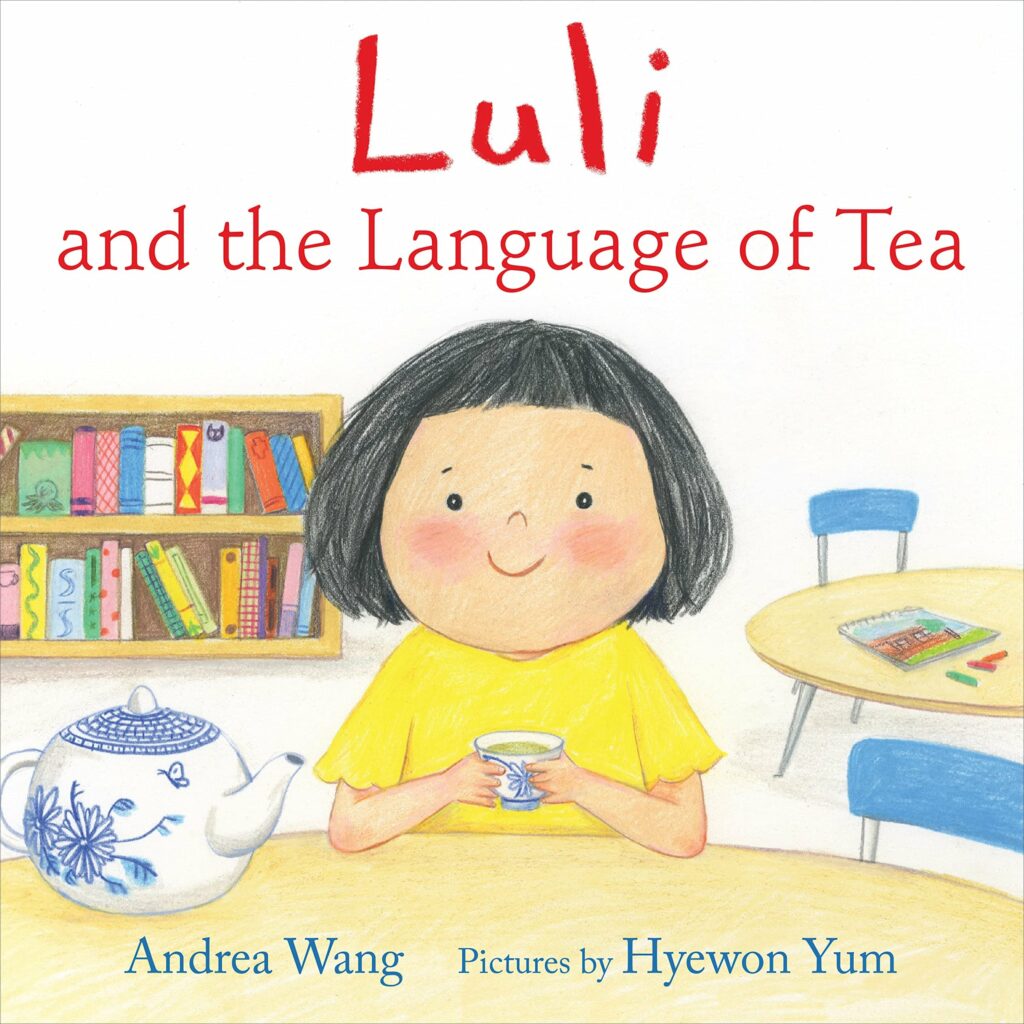
I might start with one thing from those notebooks—one memory or one factoid—and then I’ll flip through the notebooks looking for other ideas that could go along with it or freewrite about it. For example, Luli and the Language of Tea started with a factoid about the word for “tea” sounding very similar in over two hundred languages. That led me to think about my memories of tea, my parents’ tea-drinking habits, and then my father’s job teaching English to speakers of other languages. I merged several of these topics together to create the story.
Jason: I look for two things when I’m deciding what to work on next: a topic that fascinates me and a story to go with it. Often, it starts with a topic that I just can’t get out of my head, and at some point, I make a connection that gives me a glimpse of a story. It might be a personal connection, or maybe it’s a connection with a character, or it could be just an image. That’s when I can start to see it as a book.
I’ve learned to notice when I am reading about a topic and I start daydreaming and stop paying attention to the text. Often, I’m daydreaming because the text reminded me of something and sparked a flight of fancy. More than once, this experience has become the kernel of a story.
Collaborative Classroom: Watercress gently illustrates the universal experience of not fitting in, which is all the more acute for immigrant families, especially in environments where most everyone else is not like them. Andrea, you said that for a long time you were the only Asian American student in your grade in Ohio3 and while adults may have been nice, you felt separate, different from your peers. You were also separate from your parents in a way, because you didn’t share their memories of China, and you were making your way as a child in a world that was new to them. Could you talk about that experience and also perhaps suggest ways classroom communities can be made more comfortable for students who might be feeling as you did?
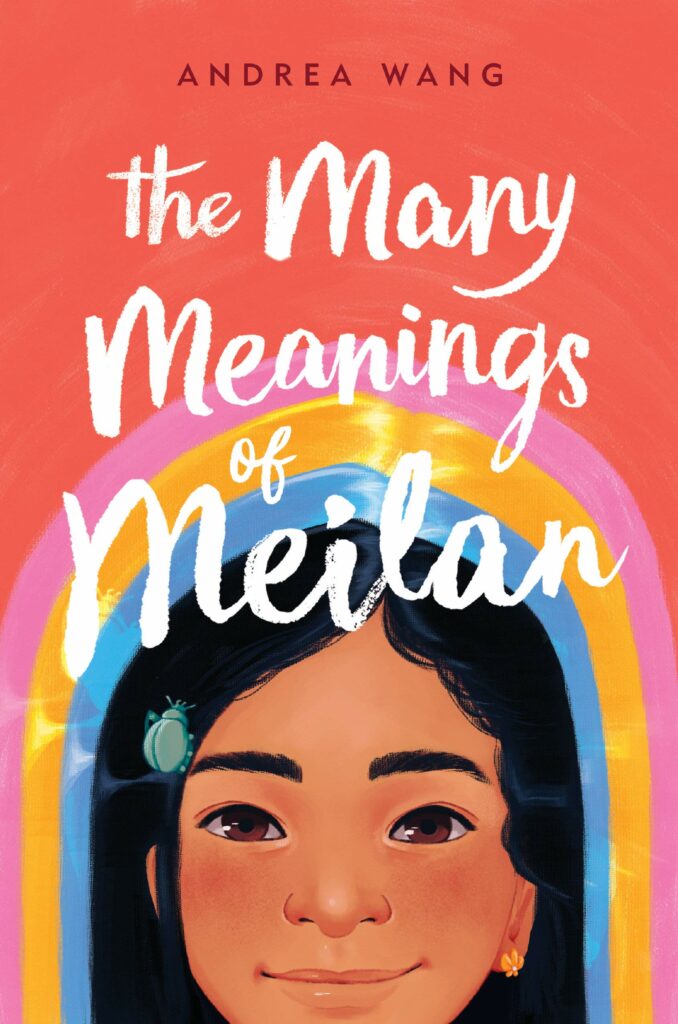
Andrea: I describe the experience as feeling “unmoored,” especially since my parents didn’t talk about their childhoods very much. I felt like I was drifting between cultures and not fully understanding either of them. I would’ve loved to have had books with Asian American characters more available. Diversifying classroom libraries, reading books that represent students’ identities during story time, and reviewing lists of assigned reading to make sure that books by and about people from marginalized communities are included, are great ways to start making students feel more comfortable.
Speaking as someone who was painfully shy, I always hated being singled out in class for being Chinese American and asked to be an “expert” on a topic, whether it was Lunar New Year or dim sum or once, Taoism. I felt humiliated when I didn’t know the answer. Let the students decide if they want to share. I saw on social media that one teacher read my middle grade novel, The Many Meanings of Meilan, with their class and then had all the students research the origins of their names. They were then invited to share their name stories with the class. I thought that was a wonderful way to learn how to pronounce everyone’s names correctly without singling out anyone.
Collaborative Classroom: Food can serve as a unifying experience as well as an alienating one, depending on the situation. Jason, you’ve shared the story of your father’s experience at around six years of age when his teacher asked what the students ate that morning—answers included eggs, toast, cereal and so on; when your dad shared the Chinese name for a minced pork dish he ate for breakfast everyone responded with, “what’s that?!” They kept asking, your dad was embarrassed, and later, he said he didn’t ever want to eat Chinese food again.4 You’ve also told a different kind of story of your parents eagerly sharing Chinese food with others5, as a way to actively bring people together across cultures and “take the foreignness” out of it. Andrea, Luli and the Language of Tea also bridges differences with food: when children from many different countries hear, in their classroom, a familiar-enough word to understand “tea” in their home language, the universe of shared food and drink brings the children together in that one small moment. Can you talk about other times in cross-cultural settings that food brought you closer to others and/or took you farther apart?
Jason: Sharing food can certainly help people connect across cultures. Unfamiliar food can also drive people apart. Chinese cuisine includes many foods and flavors that are unfamiliar to many Americans, and it’s pretty common to hear not-so-innocent jokes about fish heads and chicken feet. People use food differences to emphasize impurity stereotypes all the time. Immigrants are “dirty,” while those of us that live here are “clean.” It’s important that we teach children to have an open mind and to challenge these stereotypes. Recently, I learned of a preschool teacher who taught her students about foods from around the world. They all learned the phrase, “Don’t yuck my yum.” I love that phrase and how she was teaching her students to have open minds from such an early age.
Andrea: One of the reasons why I like to write about food is because it’s an easy entry point to another culture and can often build community. As a child, I used to be horribly embarrassed when my mother made steamed bao filled with sweet red bean paste and gave them to my teachers at parent-teacher conferences. But as a young adult, I began bringing Chinese pastries to share with friends and at different events. I found that I liked introducing them to a part of my heritage, and they liked having something besides brownies and cookies! But to Jason’s point, food can also divide people. I agree that it’s important to teach children (and adults!) to be open-minded about unfamiliar foods. Sometimes learning the historical context or bigger picture around a food can help shift perspectives. When suffering through a famine, wouldn’t you rather eat fish heads or chicken feet than dirt? Entomophagy (eating insects) sounds more appealing when you realize it could help fight climate change.
Collaborative Classroom: Andrea, in the School Library Journal interview on The Yarn you reflect on the memory at the heart of Watercress (and I paraphrase): it was something I had always wanted to keep hidden, and it was now out there for everyone to see.6 It was daunting. Jason, in your Caldecott medal acceptance speech you said: “ … breathe life into your art, put your whole self into it … .”7 Writing and drawing are wonderful and scary for much the same reason: we share our innermost selves with others whether it’s by narrating personal stories or pouring our heart into artwork and nonfiction narratives. What would you say to children about having the confidence to be their true selves and to put that self fully into their writing, or whatever they do?
Andrea: Not every piece of writing has to be for public consumption. Watercress actually started out as a personal essay that I wrote for myself in order to process my grief over losing my mother. I never intended to show it to anyone. I would tell children that if it’s too scary right now to share their true selves with other people, they can start by keeping a private journal and putting their honest thoughts and emotions in it. Sometimes people name their journals and write their entries as if they’re writing letters to an imaginary person with that name. I think that helps them practice being their true selves with someone else and gain confidence to be their true selves in real life.
It is daunting to express your innermost thoughts and feelings in writing and have people read it, because you know you’ll be judged. But it can also be incredibly rewarding, because you know that the readers who like and appreciate your work are truly seeing you. Those are genuine connections. Conversely, if you don’t put your whole self into your work, I think readers will be able to sense its inauthenticity.
Jason: I would tell them that I used to hold my feelings inside. Expressing them made me uncomfortable. I didn’t like the feeling of having people’s attention on me, so I didn’t share much. The problem was that I kept a lot of negative feelings inside and that made me unhappy. When I finally began to express them (little by little—it took time), I learned that other people had similar feelings. I learned I wasn’t alone, and it became easier to make and keep friendships. Taking the risk was hard, but it was worth it both for my mental health and for my art.
When artists put their authentic selves into their art—their opinions, their feelings, their personality—the art will be more successful because it will connect with more people. You have to put yourself into your work. How can the audience see themselves in the art, if you can’t see yourself in it? How can you ask them to care about it if you didn’t care about it? For me, this is what is most important in a piece of art.
When artists put their authentic selves into their art—their opinions, their feelings, their personality—the art will be more successful because it will connect with more people.…How can the audience see themselves in the art, if you can’t see yourself in it?
—Jason Chin
Collaborative Classroom: There are a lot of cross currents in children’s publishing right now: important discussions about representation, questions about creative freedom, and a huge surge in book bans. In the midst of all the noise, what do you think is most important for us to remember about the role of books in children’s lives, and what part do you hope your books will play?
Andrea: I think it’s important to remember that books not only provide information, but they feed the imagination. They can provide an escape from ordinary life and infuse a reader with wonder, joy, and hope. At a time when more and more young people are struggling with their mental health, I believe that books can provide a lifeline. I hope that my books will show children that they’re not alone, that things can get better, and that they are enough.
Jason: I am very concerned about how students acquire information today and how they will do so in the future. As technology and culture progresses, more and more sources of information will compete for their attention. They will have their work cut out for them sorting fact from fiction and sorting through the competing narratives and perspectives of different creators (both human and AI).
It’s daunting, but I am drawn to the idea that curiosity is the cure (or at least part of it). Approaching the world with curiosity orients you towards truth seeking, and opens your mind to possibilities. I hope children learn valuable information from my books, and understand that the information is supported by good evidence. Most of all, I hope that readers will enjoy the experience and come away wanting to learn more. I hope the books will leave students curious.
Collaborative Classroom: Andrea, you have said:
“We all want our children, our students, to be happy, and the temptation is to only give them the fun books, to share only the sweet family stories. But avoiding the tough topics does them a disservice—I think it gives children the message that they shouldn’t talk about the sad things or the negative emotions. … Sharing difficult stories gives them a way to process their feelings and the words to talk about them.”8
At Collaborative Classroom, we select books that offer honest portrayals of history and contemporary life, in age-appropriate ways, and hope the inevitable tough topics will be navigated in a supportive classroom. But these are subjective decisions and not everyone agrees with what is suitable for young kids. In the complicated environment we’re in right now, choices can easily cause concern or controversy. What are your thoughts on this? What considerations do you have for determining what is important to share and at what age, in what context?
Andrea: Kids are incredibly smart. They intuit things that they do not yet have the language for and observe things when adults don’t think they’re watching. So I try not to limit the kinds of topics that I write about. I choose topics that I’m passionate about, stories that I think I needed as a child, in an effort to give children the language to talk about difficult situations and emotions.
Kids are incredibly smart. They intuit things that they do not yet have the language for and observe things when adults don’t think they’re watching. So I try not to limit the kinds of topics that I write about.
—Andrea Wang
That said, I also try to leave room in the text for children who may not be ready to tackle a particular issue to be able to glide past it without paying it much attention. For example, on the page in Watercress where the mother relates the story of what happened to her brother during the famine, the text is deliberately ambiguous. It reads, “‘During the great famine,’ she says, ‘we ate everything we could find, but it was still not enough.’” I was conscious of not clearly stating that the brother had died; I wanted the text to be just subtle enough that young children could avoid, consciously or subconsciously, the fact of the brother’s death.
Collaborative Classroom: Andrea, I love the descriptive language in Watercress: “Mud squelches up between my toes, stings my ankles…” “[Watercress] is delicate and slightly bitter, like Mom’s memories of home.” What role does rewriting play in honing the language in your work for both picture books and novels (e.g., The Many Meanings of Meilan)?
Andrea: For me, most of the writing process is rewriting. It’s through multiple revisions that I clarify themes, find the heart of the story, deepen characters, and refine the language. I always have Thesaurus.com open in a browser tab so I can easily look up synonyms, and I frequently refer to The Emotion Thesaurus by Angela Ackerman and Becca Puglisi for descriptions of emotional body language. I pay a lot of attention to diction and syntax, and rewrite sentences over and over until they sound right both in my head and when read aloud. The cadence and musicality of the text is important, especially with picture books, which are read aloud to children. For longer works, I focus on making the characters’ voices distinct, often by giving them speech quirks. In The Many Meanings of Meilan, I worked on creating metaphors and similes that related to Chinese mythology, to show Meilan’s perspective of her world.
Collaborative Classroom: Names figure prominently In The Many Meanings of Meilan—Meilan has the painful experience of being renamed at school for the convenience of others; her name has many meanings just as she has many parts to herself; and she’s reading the Earthsea trilogy (by Ursula Le Guin), which reinforces the significance of true names and making ourselves whole. Andrea, could you talk about the power of names in (especially immigrant) families, in our culture, and at school? (Interestingly, there are no names in Watercress.)
Andrea: Names are so important—they’re the first things we learn about ourselves and our relationships to family members. Names can also connect us to our cultural heritage or reflect our unique identities. So being renamed or called the wrong name by someone else can be painful and triggering. And if it’s done purposefully, it can be an act of aggression. I have heard from readers, both kids and adults, about being called the wrong name by someone in a position of power and feeling unable to correct them. I try to make a point of asking someone what they would like to be called and learning how to pronounce it correctly. That small bit of extra effort can go a long way in creating and maintaining relationships.
As for Watercress, one of my early picture book versions was told from a third person point of view and the girl and her brother were given names. But I felt it created too much narrative distance. When I switched to using a first person point of view, I left out names because I wanted readers to be able to insert themselves into the story.
Collaborative Classroom: Jason, you have said that when studying in China, one idea that influenced you and that reinforced what you’d learned from Trina Schart Hyman, is that the “goal of the artist is not visual fidelity but the expression of the inner spirit of the subject”9 and you married this idea to one you read in a Simon Leys essay emphasizing that a painter ideally becomes one with the subject—in that case, bamboo. Could you talk about how you embody these approaches with your subjects (both animate and inanimate) when illustrating fiction and nonfiction, both your own and other’s work?
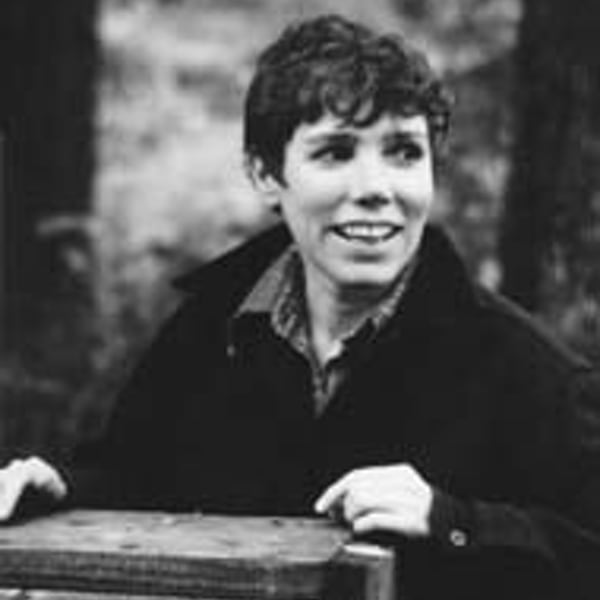
Jason: It’s really pretty simple. I try to learn as much as I can about the subject and then imagine being that person, animal, or in the place where the scene is set. When I’m imagining being a character, I think about how they are feeling and recall a time when I have felt that way. When I’m illustrating a place, I recall what it felt like to be there. When I’m illustrating a minor character, I don’t do as much research, but I still try to think of a narrative for them and imagine what they are thinking. Sometimes I model characters on people I know, and that helps a lot. With my own work, it comes naturally because the idea for the story often emerges simultaneously with the character or characters. When I’m working on another author’s manuscript, it’s the research that gives me the way in, as was the case with Watercress.
Collaborative Classroom: Jason, Redwoods is a beautiful example of your ability to make a complex subject (the life cycle and unique ecosystem of redwoods) understandable and compelling—you create one story with your words and another one with your illustrations, which both compliment the text and have a life of their own. How does a project like this unfold? How do you synthesize the information, develop your narrative, and bring it all to life?
Jason: Redwoods came together nearly all at once. I was reading about redwood trees while on the subway and the words of the article really captured my imagination. The idea for the book came to me soon thereafter.
I didn’t feel confident in my written word, but I was confident in my illustrations, so telling the story in pictures and limiting the text to informational prose worked well for me. All I had to do was write text that was accurate and flowed reasonably well. I could leave the story up to the pictures.
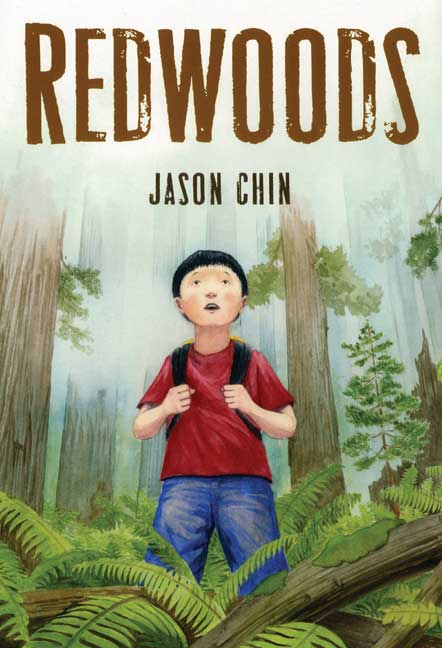
It has now been 14 years since that book was published. I have a lot more writing experience, but it’s still easier for me to draw stories than to write them. One thing that is different is that I am more intentional about how I organize the information. I begin with a basic narrative arc (a framework if you will) on which to “hang” the information. Then the creative process becomes a back and forth between the story and the science, and between the pictures and the words. I go through many outlines, storyboards, drafts and book dummies trying to piece together the puzzle of the book. The goal is to make the artwork, words, story, and science effortless and enjoyable to read.
Collaborative Classroom: Jason, In a question-and-answer video10 about Grand Canyon, which won the Texas Bluebonnet Award , you offer advice for young authors and illustrators, saying in essence: practice makes progress, don’t worry about perfection, which is impossible anyway, and have fun.
This is beautiful advice for all of us—for art and life! Can you share how you put this approach into practice? What advice do you have for kids who may feel pressure to perfect a story or to be “perfect” and therefore may not even begin for fear of failure. Is it ever hard for you to start?
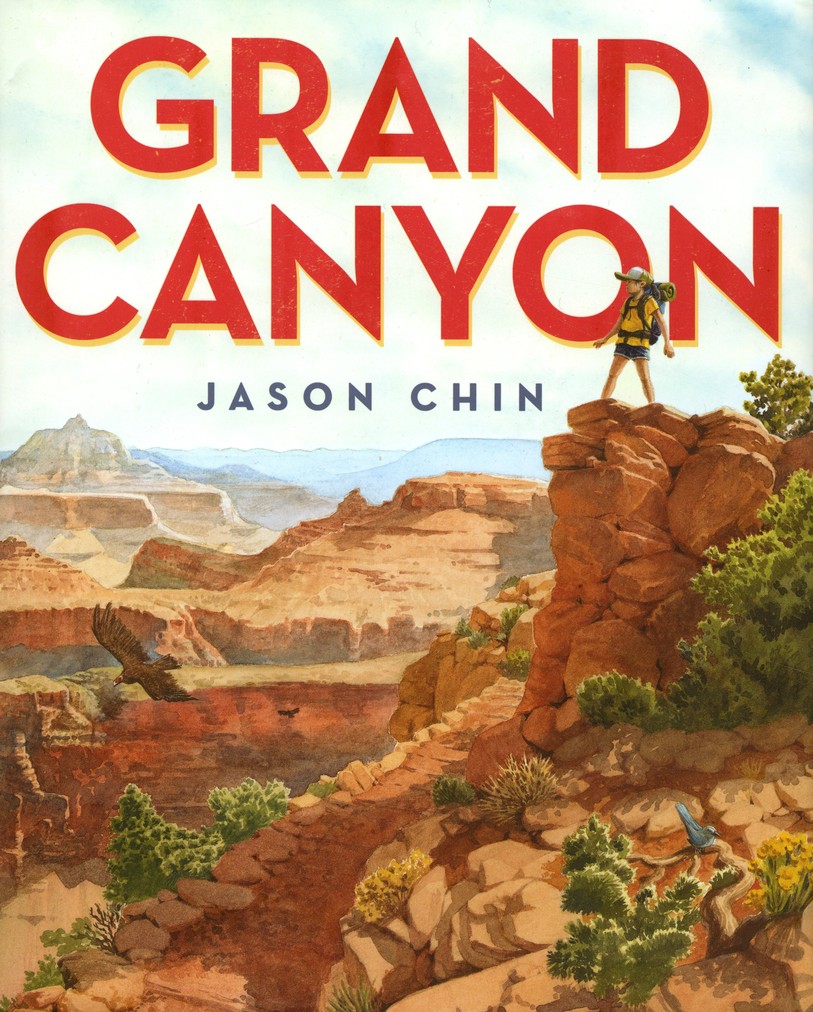
Jason: This phrase is so important to me, because as a kid I really wanted to make my pictures look like what I imagined in my head. When they didn’t (and they never did) I would get frustrated. My frustrations sometimes deterred me from wanting to draw. The problem was that when I wasn’t drawing, I wasn’t learning, and if I wasn’t learning then I wasn’t improving. I always returned to drawing eventually, because I liked it a lot. In other areas of my life, like sports, my frustrations won. I stopped improving and eventually gave them up.
When I realized that I would never make a perfect drawing, it was very liberating. I was less afraid of failure and I took more risks. I stopped trying to be perfect and focused on working hard and learning. That’s when my art really started to improve.
Collaborative Classroom: What is something that would surprise us about you (both)?
Jason: You might not think it, since I did a whole book about the Grand Canyon, but I am afraid of heights.
Andrea: Also ironically, although I’m neither very athletic nor much of a risk-taker, I love activities like ziplines and ropes and obstacle courses. I even took a trapeze class once!
***
Andrea Wang is an acclaimed author of children’s books. Her book Watercress was awarded the Caldecott Medal, a Newbery Honor, the Asian/Pacific American Award for Literature, and a Boston Globe-Horn Book Honor, among other accolades. Her other books, The Many Meanings of Meilan, Luli and the Language of Tea, Magic Ramen, and The Nian Monster, have also received awards and starred reviews. Her work explores culture, creative thinking, and identity. She lives in Colorado with her family. For more information about Andrea and her books, visit www.andreaywang.com.
Instagram: @AndreaWhyWang
X/Twitter: @AndreaYWang
Jason Chin is a celebrated author and illustrator of children’s books. He received the Caldecott Medal for Watercress, written by Andrea Wang, and the Cook Prize for Your Place in the Universe. His book Grand Canyon was awarded a Caldecott Honor, a Sibert Honor, and the NCTE Orbis Pictus Award. His other acclaimed nonfiction titles—Coral Reefs, Redwoods, Gravity, and Island: A Story of the Galapagos—have received numerous starred reviews and other accolades. He is also the illustrator of Stephanie Parsley Ledyard’s debut title Pie Is for Sharing and Miranda Paul’s Water is Water and Nine Months: Before a Baby is Born, the latter a Boston Globe–Horn Book Honor Book. He lives in Vermont with his wife and children.
Instagram: @authorjasonchin
Facebook: @authorjchin
References
- From A Bookish Home Podcast Ep. 99, “Jason Chin & Andrea Wang on the 2022 Caldecott Medal Winner, Watercress.” https://abookishhome.com/2022/04/21/ep-99-jason-chin-andrea-wang-on-the-2022-caldecott-medal-winner-watercress/ ↩︎
- From Lesley University’s Why We Write podcast Ep. 58, “Author Andrea Wang on Growing up Chinese-American in the Midwest.” https://lesley.edu/article/author-andrea-wang-on-growing-up-chinese-american-in-the-midwest ↩︎
- From The Yarn blog post, “Watercress Part 1: Colby Talks to Author Andrea Wang” by Colby Sharp. https://theyarn.slj.com/2021/04/25/watercress-part-1-colby-talks-to-author-andrea-wang/ ↩︎
- From the Holiday House Books YouTube video, “Author Andrea Wang & Illustrator Jason Chin talk about their new picture book Watercress.” https://www.youtube.com/watch?v=HJbl-klxdkc ↩︎
- From the Publisher’s Weekly article, “In Conversation: Andrea Wang and Jason Chin.” https://www.publishersweekly.com/pw/by-topic/childrens/childrens-authors/article/85817-in-conversation-andrea-wang-and-jason-chin.html ↩︎
- From The Yarn blog post, “Watercress Part 1: Colby Talks to Author Andrea Wang” by Colby Sharp. https://theyarn.slj.com/2021/04/25/watercress-part-1-colby-talks-to-author-andrea-wang/ ↩︎
- From the 2022 Caldecott Medal Acceptance by Jason Chin, published online by The Horn Book Inc., https://www.hbook.com/story/2022-caldecott-medal-acceptance-by-jason-chin ↩︎
- From the Publisher’s Weekly article, “In Conversation: Andrea Wang and Jason Chin.” https://www.publishersweekly.com/pw/by-topic/childrens/childrens-authors/article/85817-in-conversation-andrea-wang-and-jason-chin.html ↩︎
- From the Publisher’s Weekly article, “In Conversation: Andrea Wang and Jason Chin.” https://www.publishersweekly.com/pw/by-topic/childrens/childrens-authors/article/85817-in-conversation-andrea-wang-and-jason-chin.html ↩︎
- From the Texas Bluebonnet Award interview on YouTube, “Jason Chin Author & Illustrator Interview – Grand Canyon. https://www.youtube.com/watch?v=4dt77y2eIpk ↩︎
